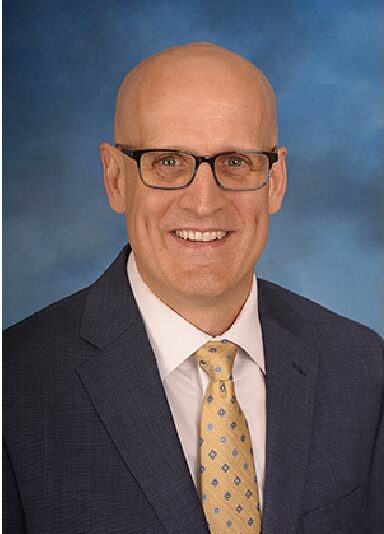
I have taken the opportunity this year with the president’s message to highlight the CAS Strategic Plan. If you have not read the plan, I encourage you to review it online.
The Envisioned Future that drives the Strategic Plan is stated as follows:
CAS members are sought after globally for their insights and ability to apply analytics to solve insurance and risk management problems.
To achieve this Envisioned Future, three strategic pillars have been identified. In the March-April 2023 Actuarial Review, I talked about the first pillar, Building Skills for the Future. The second pillar is Diversifying the Pipeline. The goal of the CAS in Diversifying the Pipeline is to:
… ensure that we attract high-potential professionals into our community who love to solve business problems with data and analytics.
I have been a part of the actuarial profession for nearly 30 years, and I can say without hesitation that the CAS has attracted many “high-potential professionals.” I know because I have worked for them, worked with them, heard them present at CAS meetings, collaborated with them on CAS volunteer efforts and studied the results of their research and development efforts. The CAS would not have been as successful as we have been for 109 years if this were not true. To ensure that we maintain our position of strength and continue to attract high-potential professionals, we must continue to understand and adjust to the reality of the world we live in today.
… the CAS has attracted many “high-potential professionals.” I know because I have worked for them, worked with them, heard them present at CAS meetings, collaborated with them on CAS volunteer efforts and studied the results of their research and development efforts.
 Two of the vivid descriptions in the Strategic Plan highlight how diversifying the pipeline will help us continue to attract high potential professionals. The first is:
Two of the vivid descriptions in the Strategic Plan highlight how diversifying the pipeline will help us continue to attract high potential professionals. The first is:
CAS members of the future will emerge through a pipeline that represents a wide variety of universities, majors, degrees and other pathways, and they will pursue a variety of career paths and opportunities afforded by the CAS educational system.
What sources feed the actuarial candidate pipeline today? Your mind may immediately go to the traditional places: math majors and universities that offer an actuarial science degree. Many of our members do come from these traditional sources, but we also have a number of members who emerge from a variety of other backgrounds. We have members who studied music, business, science and English. We have many members who did not graduate from an actuarial science program. What this has taught us is that while actuarial science programs and math degrees will remain an important part of our pipeline, our future high-potential professionals can also come from many different places.
I have experienced this personally. I knew I wanted to be an actuary going into college, and I graduated with an actuarial science degree. My son also knew he wanted to be an actuary going into college, and he graduated with a degree in accounting and finance. My son’s accounting and finance focus will give him a different perspective than what my actuarial science focus did for me, and such different perspectives will continue to strengthen the profession.
Given that we are actuaries, we are approaching this from a data-driven perspective. One of our first steps was to determine the current distribution of universities and majors among our current members. Sounds simple enough, right? Well, for those of you that have been involved in efforts to try to compile data for analysis purposes, you know that often nothing is as simple as it seems. While the CAS has been collecting this data historically, it was not collected with the purpose of this kind of analysis in mind. So, the process of cleaning and analyzing this data has been a significant undertaking, and the partnership of staff and volunteers has made excellent progress. We will use this data to establish a baseline of where we are today and then set thoughtful, intentional goals to ensure that we attract future actuarial professionals, no matter what educational or university backgrounds they come from.
This concept extends beyond just universities. Another source of future actuaries is career changers. Some actuaries have become aware of the profession later in life, coming from other careers. An actuary just shared the story with me of her son who began passing exams after a career as a teacher. These stories are great and impactful, but we also want to explore whether there is a way that we can deliberately position the actuarial profession as a more visible avenue to those who might be considering a change in career.
The second vivid description is related to diversity, equity and inclusion (DE&I) and is as follows:
CAS members, candidates and staff support diversity, equity and inclusion in the actuarial profession. CAS members are empowered to positively influence diversity efforts and create inclusive environments within their workplaces.
There has been a lot of discussion over the last couple of years about what DE&I is and the real motivations behind it. In short, our DE&I efforts are focused on ensuring:
- That there are no unnecessary barriers to joining the profession.
- That all, regardless of background, are aware of the actuarial profession.
- That, once qualified, CAS members feel that they belong and are able to contribute to the profession.
The CAS has been involved in efforts to increase awareness of the actuarial profession for longer than I even knew it existed. I was a beneficiary of these efforts. When I was a senior in high school, I received several brochures about being an actuary. In one of these brochures, two Black actuaries were highlighted, Ollie Sherman and Mike Poe, both of whom are CAS Fellows. Just seeing them in this brochure was impactful to me, and that moment was influential in my decision to pursue an actuarial career.
That was over 30 years ago, and the efforts to increase awareness continue today. The study on Barriers to Entry to the actuarial profession highlighted a number of unnecessary barriers to becoming an actuary, and many CAS efforts are attempting to address those that are related to awareness. These efforts include:
- Co-sponsoring Be An Actuary day, where high school students from diverse backgrounds who are strong in math are brought together to hear from practicing actuaries and participate in actuarial activities to learn about the profession.
- Partnering with STEM organizations that are focused on diverse backgrounds to ensure that students already interested in STEM know that the actuarial profession is an option for them.
- Supporting The Actuarial Foundation in their efforts to improve math literacy and awareness of the actuarial profession.
Once someone has made the decision to pursue the actuarial profession, we want to ensure there are no unnecessary barriers to achieving membership in the CAS. It is often stated, and it is true, that the actuarial exams are unbiased. However, just because the actuarial exams are unbiased does not mean there are not historical systematic biases that make it more difficult for some to access and pass the exams. These could manifest themselves in financial difficulties, (paying for both exam fees and prep materials) as well as in a lack of exam support — sometimes having a community to lean on throughout the exam process could be the difference between success and failure. This is why efforts like our exam reimbursement program are so important — we want to help remove as many of these unnecessary barriers as possible.
When I was a senior in high school, I received several brochures about being an actuary. In one of these brochures, two Black actuaries were highlighted, Ollie Sherman and Mike Poe, both of whom are CAS Fellows. Just seeing them in this brochure was impactful to me, and that moment was influential in my decision to pursue an actuarial career.
Another area we’re working on right now is commissioning a disability consultant to independently review our exam accommodations (as well as communications and processes around requesting accommodations) for candidates with disabilities. Many of us don’t understand the extent to which exam conditions, like access to food and drink, frequency of breaks, technology limitations and even lighting can pose unnecessary barriers to exam takers with disabilities.

Lastly, once someone has become a part of the profession, we want them to feel like they belong here, like they are part of the community and that their voices and opinions are valued. Just because someone qualified to be an actuary by passing our exams and is working as an actuary does not mean that they feel like they belong to the actuarial community. This is why CAS support of the affinity groups is so important. Affinity groups, such as the Network of Actuarial Women and Allies or the Organization of Latino Actuaries, can speak more directly and authentically to the struggles of certain groups in the profession and can provide support to those facing the same challenges as we work for change. The affinity groups offer us additional channels through which we can promote opportunities to share opinions, volunteer and influence the direction of the CAS and the profession (leadership/research/thought leadership), specifically to groups that have been underrepresented in these spaces in the past.
At the end of the day, DE&I is not about keeping anyone out; it is about making sure that everyone is able to enter, and once they enter, that they are able to succeed. I also know that DE&I efforts benefit us all. Understanding the challenges that other actuaries face can help me better support them through their journeys, and vice versa. So, I would encourage each of you to learn more about what the CAS is doing in the DE&I space and consider thinking about how you can help. There are many ways to support awareness, joining, belonging and contributing — you can see all the things the CAS is doing online. Your involvement can help ensure that we continue to attract high-potential professionals to our field and realize our Envisioned Future.











